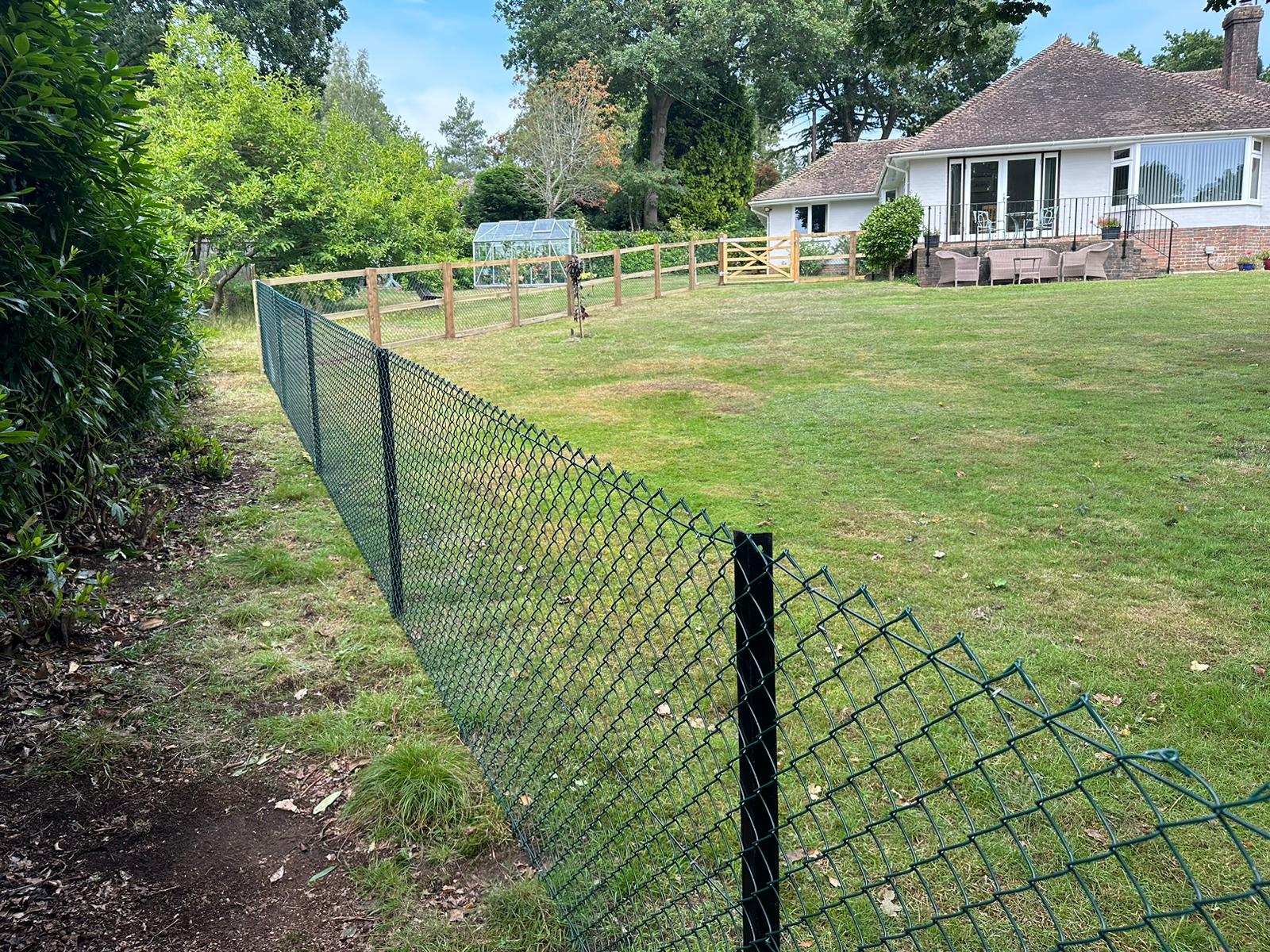

A chain-link fence (also referred to as wire netting, wire-mesh fence, chain-wire fence, , or diamond-mesh fence) is a type of woven fence.
Chain link is a popular fencing option for a wide variety of usages. It’s easy to erect and offers a cost effective method for securing your property.
This type of fence is available commonly in heights varying between three and twelve feet and made from galvanised or green PVC coated steel wire, woven into a zig zag pattern to create the familiar diamond shaped fence.
Usually concrete and angle iron are the posts used with chain link, It also, being a transparent style of fence, does not block out sunlight, and the open style makes it ideal for particularly windy and exposed areas.
This style of fencing can be popular for both domestic and commercial areas, workplace and schools. It is a great boundary fencing for all needs.
The installation of chain-link fence involves setting posts into the ground and attaching the fence to them. The posts may be steel tubing, timber or concrete and may be driven into the ground or set in concrete.
End, corner or gate posts, commonly referred to as “terminal posts”, must be set in concrete footing or otherwise anchored to prevent leaning under the tension of a stretched fence. Posts set between the terminal posts are called “line posts” and are set at intervals not to exceed 10 feet.
The installer attaches the fence at one end, stretches it, and attaches at the other, easily removing the excess by “unscrewing” a wire. In many cases, the installer stretches a bottom tension wire, sometimes referred to as “coil wire”, between terminal posts to help minimize the in and out movement that occurs at the bottom of the chain-link mesh between posts.
Top horizontal rails are used on most chain-link fences, although not necessary if the terminal posts are braced correctly. A top tension wire may be used in this situation. Bottom rails may be added in lieu of bottom tension wires, and for taller fences, 10 feet or more, intermediate horizontal rails are often added.
Finally, the installer ties the fence to the line posts and rails with steel or aluminium wire with a hook on one end called “fence ties”. The bottom tension wire should be secured to the line posts and the chain-link mesh “hog ringed” to the tension wire 2′ on centre.